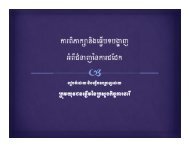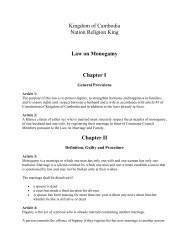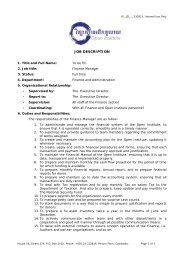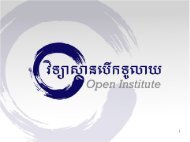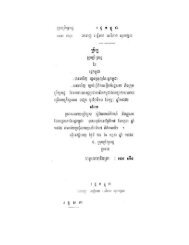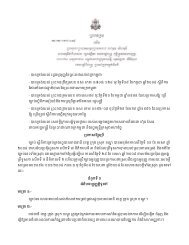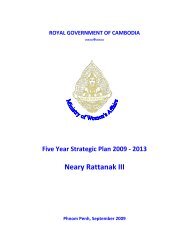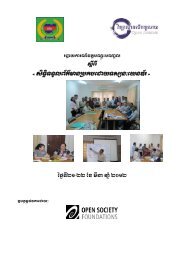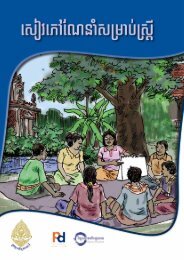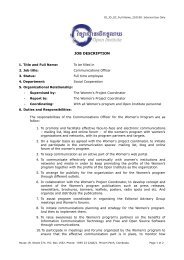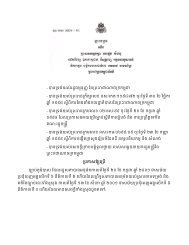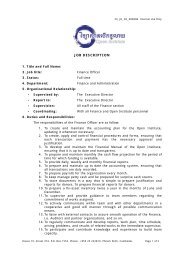Education Education An approach to some basic Indicators for ...
Education Education An approach to some basic Indicators for ...
Education Education An approach to some basic Indicators for ...
Create successful ePaper yourself
Turn your PDF publications into a flip-book with our unique Google optimized e-Paper software.
60 Catalog of Indica<strong>to</strong>rs <strong>Education</strong> same level, and multiply the result by 100. Where: PTP ht= Percentage of teaching staff in private institutions at the level of education h in school year t Tp h t = Teaching staff in private institutions at the level of education h in school year t T h t = Total number of teachers (in public and private educational institutions) at level of education h in school year t Subject of Teaching Divide the number of field teaching in a given level of education by the <strong>to</strong>tal number field of teaching at the same level and multiply the result by 100. Where: PTS h t = is percentage of specific teaching subject at the a level of education h in school year t TS h t = teaching subject at the level of education h in a school year t T h t = <strong>to</strong>tal number of subject at level of education h in school year t Priority: Yes Indica<strong>to</strong>r developed: Yes Local/International: Local and International Kind of indica<strong>to</strong>r: On going Data source/s: [1] <strong>Education</strong> Indica<strong>to</strong>rs: Technical guidelines. United Nations <strong>Education</strong>, Scientific and Cultural Organization. 2009. [2] Tools and indica<strong>to</strong>rs <strong>for</strong> gender impact analysis, moni<strong>to</strong>ring and evaluation. Economic Commission <strong>for</strong> Latin America and the Caribbean. 2002. [3] A FAIR SHARE FOR WOMEN: CAMBODIA GENDER ASSESSMENT AND POLICY BRIEFS. Ministry of Women's Affairs. 2008. Challenges: This indica<strong>to</strong>r measures the level of gender representation in the teaching profession rather than the effectiveness and quality of teaching. In countries where private institutions are substantially subsidized or aided by the government, the distinction between private and public educational institutions may be less clear-‐cut especially when certain teachers are paid by government. The fact that <strong>some</strong> religious or private schools are not registered with the government nor follow the common national curriculum may also result in them not being included in official statistics, hence preventing a realistic assessment of the share of teachers in private education. Linked <strong>to</strong> policy: National Policies in <strong>Education</strong>, <strong>Education</strong> <strong>for</strong> All, <strong>Education</strong> Law, Five, Year <strong>Education</strong> Stragetic Plan, <strong>Education</strong> Sec<strong>to</strong>r Support Program Other comments: Percentage of female teachers <strong>approach</strong>ing 50% indicates gender parity in the composition of the teaching <strong>for</strong>ce. A value of greater than 50% reveals more opportunities and/or preference <strong>for</strong> women <strong>to</strong> participate in teaching activities at a specific level, grade or programme of education. Data can be disaggregated by Sex, Age, Level of education they teach, Field of teaching, Public




